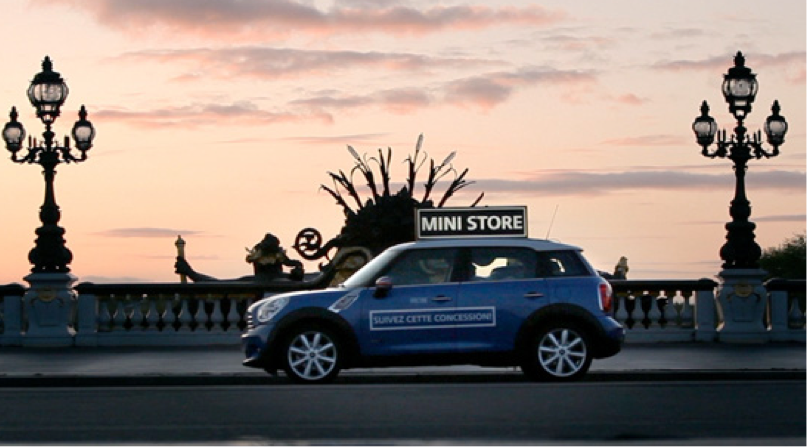When it comes to cars, test drives are a key moment on the shopper’s path to purchase. They often compel shoppers to visit dealerships. Knowing that opening a new store in Paris would have been too expensive, Mini France recently launched a campaign promoting the opening of 10 new “Mini stores” in Paris. The whole idea sprung from a brilliant idea: “If you don’t go to the store, the store will come to you.” The company had 10 cars acting as scaled-down, mobile stores (each one with a salesman, brochures, and hours from 9 a.m. to 6 p.m.) driving around the city and enabling passers-by to enjoy a test drive and even purchase that car itself, if they wanted to. To top it all off, the places the cars were parked were immediately branded as Mini store locations.
Although the campaign was shortlisted for the 2012 Cannes Lions under the Branded Content and Entertainment category, it could have been considered as a shopper marketing campaign as well. There are many good ideas within this operation:
1.It enables easy product trial: Having potential buyers schedule appointments is becoming too big of a challenge for car manufacturers, and this operation drives trial outside of the traditional method of having potential car buyers go to actual dealerships.
2.It is a cheaper solution than building brand-new stores.
3.It plays on nomadism: Volatility of the stores underlines the urban and connected personality of the brand. Having ephemeral, wandering stores also allows Mini to crowd its competitors’ dealerships out, by going where no other shop can. (Of course, one could still object that people seldom decide to buy a car spontaneously). Being mobile eventually creates awareness throughout the whole city of Paris.
4.It leverages the Mini brand positioning statement: Because each Mini store is the size of the product, it ensures consistency with the core brand values.
Brands are ceaselessly exploring new ways to stand out at retail and connect with their audiences either by playing on a product’s characteristics to influence retail environment (Lego, for instance, created a subtle and iconic store design that makes the shopper feel like he is venturing inside a giant, yellow Lego brick) or even by intertwining the product and the shop themselves. (with iTunes, Apple provides a best-in-class example of a store embedded in the product the iTunes store is available within the device itself). Thanks to this cutting-edge operation, Mini takes the relationship between point of sale and product a step forward, because the store turns out to be the product itself. Perhaps this is the overall achievement of a perfect synthesis between product, brand equities, and retail environment?
– Contributed byJonathan Kagane, Integer Paris


